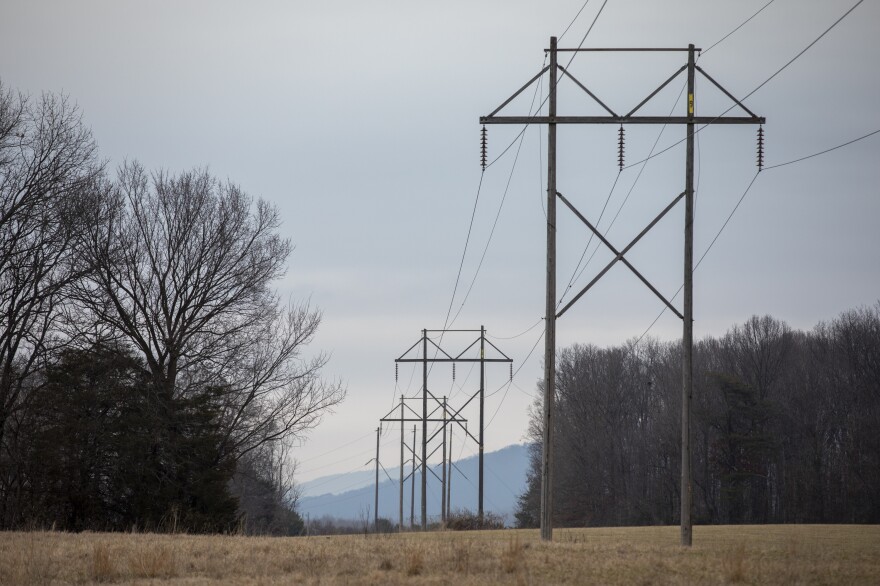RELATED COMMENTARY: A looming energy crisis | Put the power back in Pa.
HARRISBURG, Pa. - Something has changed at PPL – and not for the better for competitive markets or consumers.
It was only a few years ago, PPL’s CEO praised Pennsylvania’s restructured electricity market: “With the passage of the Competition Act in 1996, this General Assembly enacted sound policy to deregulate the market and prohibit utilities from making investments in generation.” As former Pennsylvania Public Utility Commission chairmen who collectively served under seven different governors, we couldn’t agree more.
PPL is now changing its tune and wants to return to a time when captive customers paid more than the national average for electricity and shouldered the risks associated with building and operating power generation. Pennsylvania leaders should hold the line on behalf of consumers and protect competition.
Restoring power generation monopolies for utilities such as PPL runs counter to common sense because competition is working. Customer electricity rates are consistently below the national average. Independently owned competitive power generators have created a massive in-state surplus of electric power and solely bear the costs and risks of building new power generating plants.
PPL’s policy shift ignores the fortunate position that Pennsylvania now enjoys thanks to competitive markets. Pennsylvania currently has 70% more power than it needs to meet peak demand. This enviable surplus means Pennsylvania nearly always exports power to neighboring states with generation deficits, no matter how much demand fluctuates.
"If Pennsylvania customers are required to again pay for new power generation built by PPL or other utilities, it will be to meet the electricity needs of other states, not Pennsylvania."
According to regional grid operator PJM, Pennsylvania has more than enough power to meet its needs through 2032, even if no new supply is added – which it certainly will be.
To be clear, if Pennsylvania customers are required to again pay for new power generation built by PPL or other utilities, it will be to meet the electricity needs of other states, not Pennsylvania. Let’s look at some other points that require correction.
Competition among power generators
The market holds power generators accountable. PPL claims that competitive power generators have no obligation to serve. This statement is false. PJM generators must offer their capacity into the market unless they receive specific permission from the PJM’s Independent Market Monitor. If they do not perform when called upon by PJM, their owners face crippling penalties.
Competition is producing lower prices for consumers. PPL expresses indignation about “skyrocketing” capacity costs while ignoring customers' historically low capacity prices for three successive capacity auctions, prompting many generators to retire ahead of schedule. For example, PPL customers are currently paying $28/megawatt-day for capacity in the PJM market. Customers in Virginia who are not getting capacity from PJM are paying $464/megawatt-day. This is a significant difference in customer costs.
PPL already has the ability to create a non-regulated affiliate company to build new power generation now. Instead, they want captive utility customers to pay for it. PPL does not own any generation, although it once did before abandoning that business in 2015 so the company (in its words) could be “separated from the uncertainties and challenges in the wholesale power market.” Under the Competition Act, PPL can build new power generation, but with its own at-risk capital (not with guaranteed ratepayer dollars).
'Success story'
The bottom line is that competitive power markets have been an enormous success story in Pennsylvania, and there is no reason for regulators and policymakers to jeopardize that success. Are there challenges ahead? Definitely. However, Pennsylvania’s competitive power markets have proved to be remarkably resilient and beneficial for all consumers. They have endured recessions, polar vortexes, inflation, high and low interest rates, pandemics, and natural disasters. All while delivering data-verified value to consumers through low rates, unprecedented investment, and remarkable emissions reductions. Pennsylvania’s competitive market structure is more than capable of getting the Commonwealth through the challenges ahead.
But don’t just take our word for it. Listen to PPL’s CEO, who less than five years ago said, “PPL Electric Utilities customers have benefited greatly from the restructuring of the markets since 1996, by paying rates that have consistently been below the national average. Additionally, restructuring no longer requires customers to bear the risk of a generation plant’s success or failure. That risk was rightfully placed on the backs of investors.”
Left unexamined and unchecked, PPL’s approach is one of self-interest and assumes that consumers will be used as shields to fund its power generation venture and subsequent profits. Its proposal is a dramatic departure from the provisions of the 1996 Competition Act which has provided huge benefits to retail customers across the commonwealth – an Act that PPL championed for decades.
James Cawley served on the Pennsylvania Public Utility Commission from 1979-1985 and 2005-2015; Robert Powelson served from 2008-2015; and Glen Thomas served from 2001-2005.

